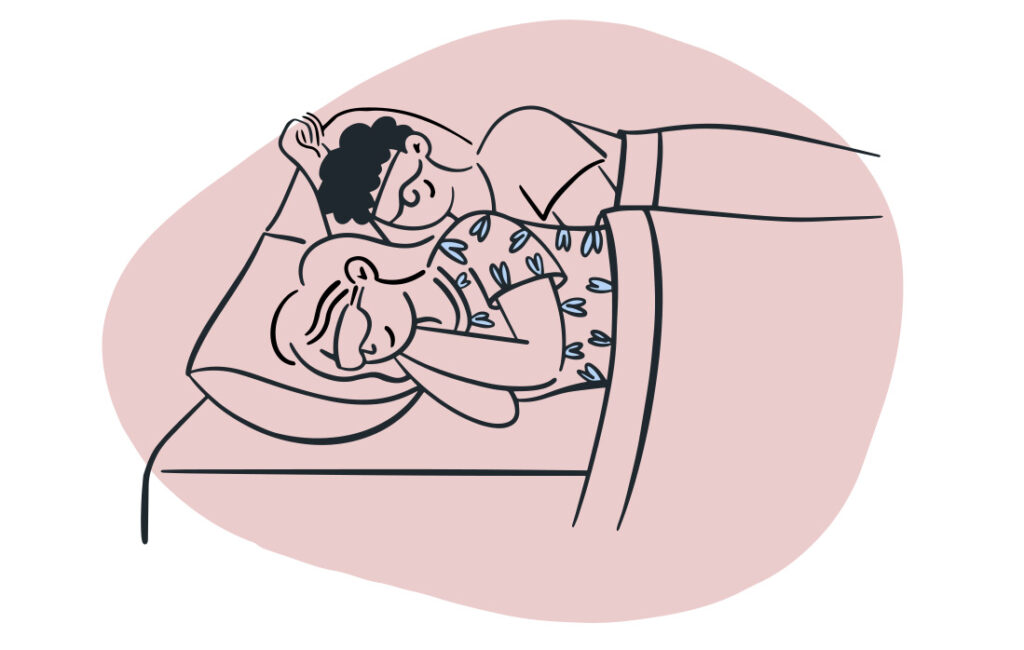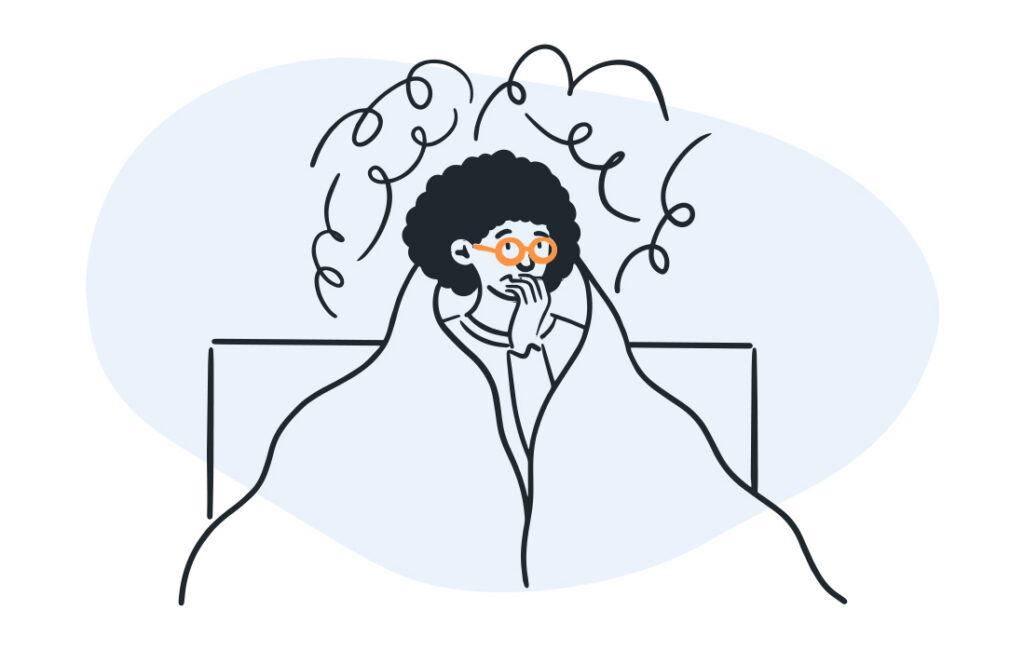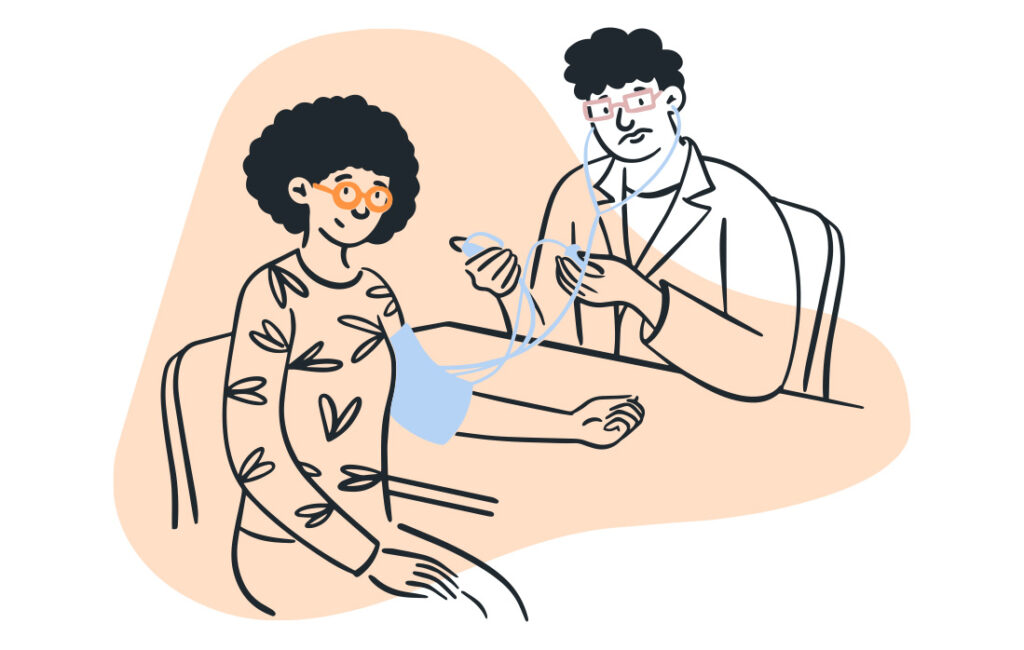Sexsomnia: Definition, Causes, and Treatments
Disclosure: By clicking on the product links in this article, Mattress Nerd may receive a commission fee at no cost to you, the reader. Read full disclosure statement.
Sexsomnia (aka sleep sex) is type of parasomnia, or a sleep disorder, where a person engages in sexual activity while they sleep. It is sometimes confused with the term, “sexomania.” Here’s everything you need to know about this rare sleep disorder, including its causes, symptoms, and treatments.

What is Sexsomnia?
Sexsomnia is a very rare type of parasomnia — a sleep disorder that involves unusual behaviors that can disrupt your sleep. People who have sexsomnia will engage in sexual acts as they sleep. Possible behaviors include making sex noises, sexual movements, sexual aggression, sweating, or masturbation.
Due to the sexual nature of the condition, sexsomnia can cause a lot of distress for those who have it. It may also have a negative impact on a person’s relationship with their partner(s).
Just keep in mind that sexsomnia is nothing to be ashamed of. It can be treated with the help of lifestyle changes, cognitive behavioral therapy, or medications.
What is Parasomnia?
Parasomnias are a group of sleep disorders that involve abnormal motor, behavioral, or verbal events during sleep. Studies show they can occur during non-rapid eye movement (NREM) and rapid eye movement (REM) stages of sleep.
Parasomnias can be very disruptive and may lead to poor sleep. This can have a negative effect on your quality of life in general.
In addition to sexsomnia, examples of parasomnias include:
- nightmares
- night terrors
- sleep talking
- sleepwalking
- teeth grinding
- other sleep disorders like REM sleep behavior disorder or nocturnal sleep-related eating disorder

What Causes Sexsomnia?
Researchers are still trying to pinpoint the exact cause of sexsomnia. Currently, it’s thought that a combination of factors can increase your chances of having this condition. This includes:
- stress
- anxiety
- depression
- sleep deprivation
Sexsomnia has also been found to have an association with other sleep concerns or conditions, such as:
- narcolepsy
- sleepwalking
- sleep paralysis
- chronic insomnia
- restless leg syndrome
- exploding head syndrome
- obstructive sleep apnea (OSA)
- sleep-related hypermotor epilepsy
- sleep-related eating disorder (SRED)
Additionally, a person’s age and gender may also increase the chances of having sexsomnia. According to molecular biology expert and practicing physician Dr. Virginia Blackwell, men are five times more likely to have symptoms of sexsomnia than women.
“Sexsomnia is also more common in younger people, with 35 to 44-year-olds being the most susceptible,” she adds.
Symptoms Of Sexsomnia
People who have sexsomnia might experience one or many of the following symptoms:
- fondling
- masturbation
- sexual noises
- sexual assault
- sexual aggression
- sexual movements
- initiating sexual activities
“Some distinct features of sexsomnia are automatic arousal, restricted and specific motor activities, and the presence of some form of dream meditation,” says Dr. Katherine Hall, Sleep Psychologist at Somnus Therapy.
However, it’s important to note that sexsomnia symptoms can vary a lot from person-to-person. According to a 2017 study, masturbation is the most common behavior in women, but again, everyone is different.

Dealing With Sexsomnia
Sexsomnia treatments depend on underlying causes and specific symptoms. According to a 2021 study, a combination of treatments might be recommended. This includes:
- prescription medication
- cognitive behavior therapy
- lifestyle changes to reduce stress and anxiety
- continuous positive airway pressure therapy (CPAP)
You can also try to treat sexsomnia at home. Most importantly, you should try to maintain a healthy and regulated sleep-wake schedule. Do your best to go to sleep and wake up at the same time everyday, even on weekends.
It’s also a good idea to avoid triggers like:
- drug use
- shift work
- sleep deprivation
- poor sleep hygiene
- drinking alcohol (especially before bed)
Final Thoughts
Sexsomnia, a type of parasomnia, is a sleep condition that involves a person engaging in sexual activity while they’re asleep. This can lead to feelings of embarrassment and shame, and may have a negative impact on a person’s partner(s).
While we still don’t know the exact cause, researchers believe it might be caused by a combination of factors like stress, anxiety, sleep deprivation, or depression. It’s also been linked to other sleep conditions and is most common in men in their 30s or 40s.
Sexsomnia can often be treated with the help of prescription anti-depressants, lifestyle changes, and cognitive behavioral therapy.
Sources
- Blackwell V. (2022). Personal interview.
- Dubessy A, et al. (2017). Sexsomnia: A Specialized Non-REM Parasomnia? pubmed.ncbi.nlm.nih.gov/28364495/
- Hall K. (2022). Personal interview.
- Martynowicz H, et al. (2018). The Co-Occurrence of Sexsomnia, Sleep Bruxism and Other Sleep Disorders. ncbi.nlm.nih.gov/pmc/articles/PMC6162860/
- Schenck CH, et al. (2007). Sleep and sex: what can go wrong? A review of the literature on sleep related disorders and abnormal sexual behaviors and experiences. pubmed.ncbi.nlm.nih.gov/17580590/
- Singh S, et al. (201). Parasomnias: A Comprehensive Review. ncbi.nlm.nih.gov/pmc/articles/PMC6402728/
- Rahmatullah S, et al. (2021). A Novel Treatment Approach to Sexsomnia: Cognitive Behavioral Therapy. journal.chestnet.org/article/S0012-3692(21)03534-0/fulltext#